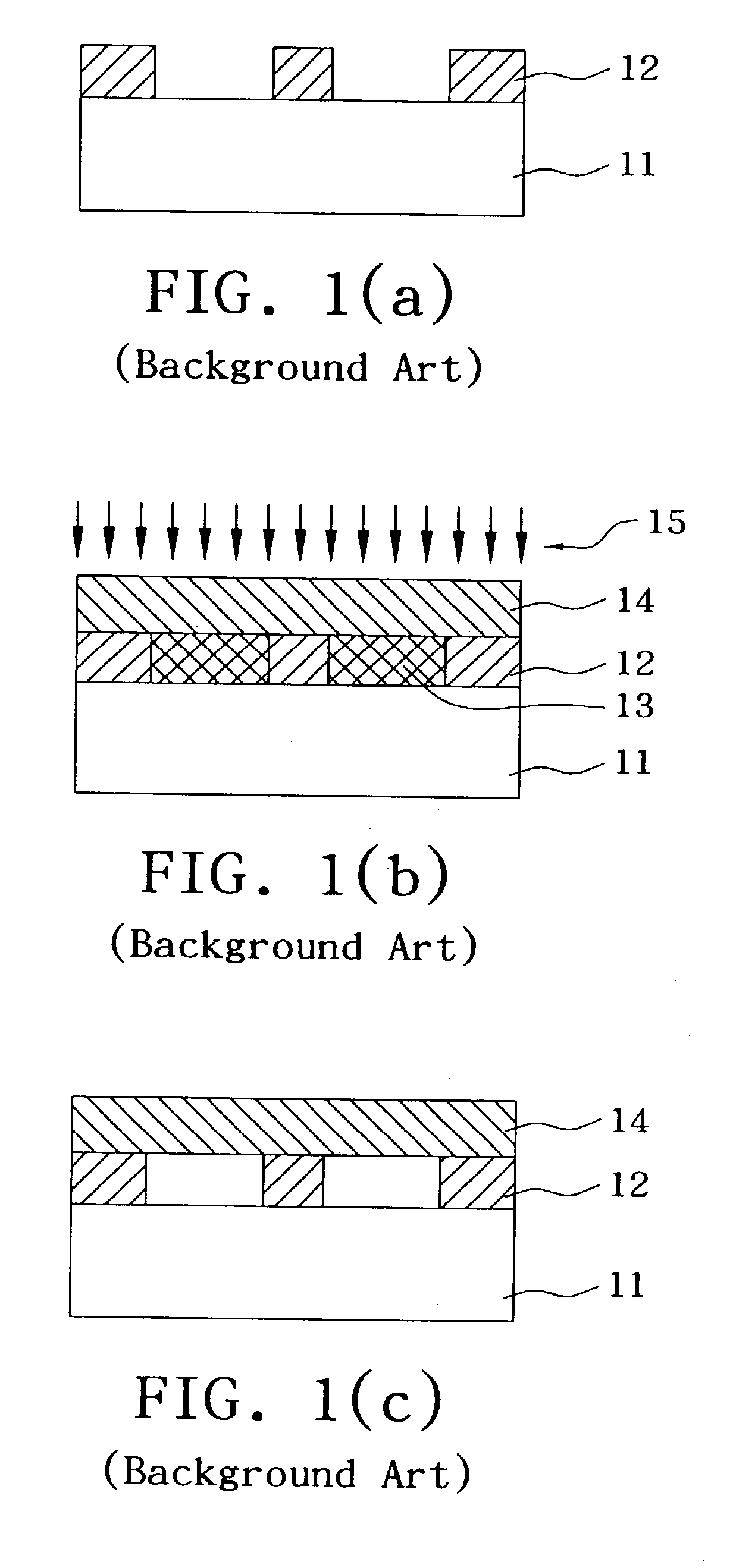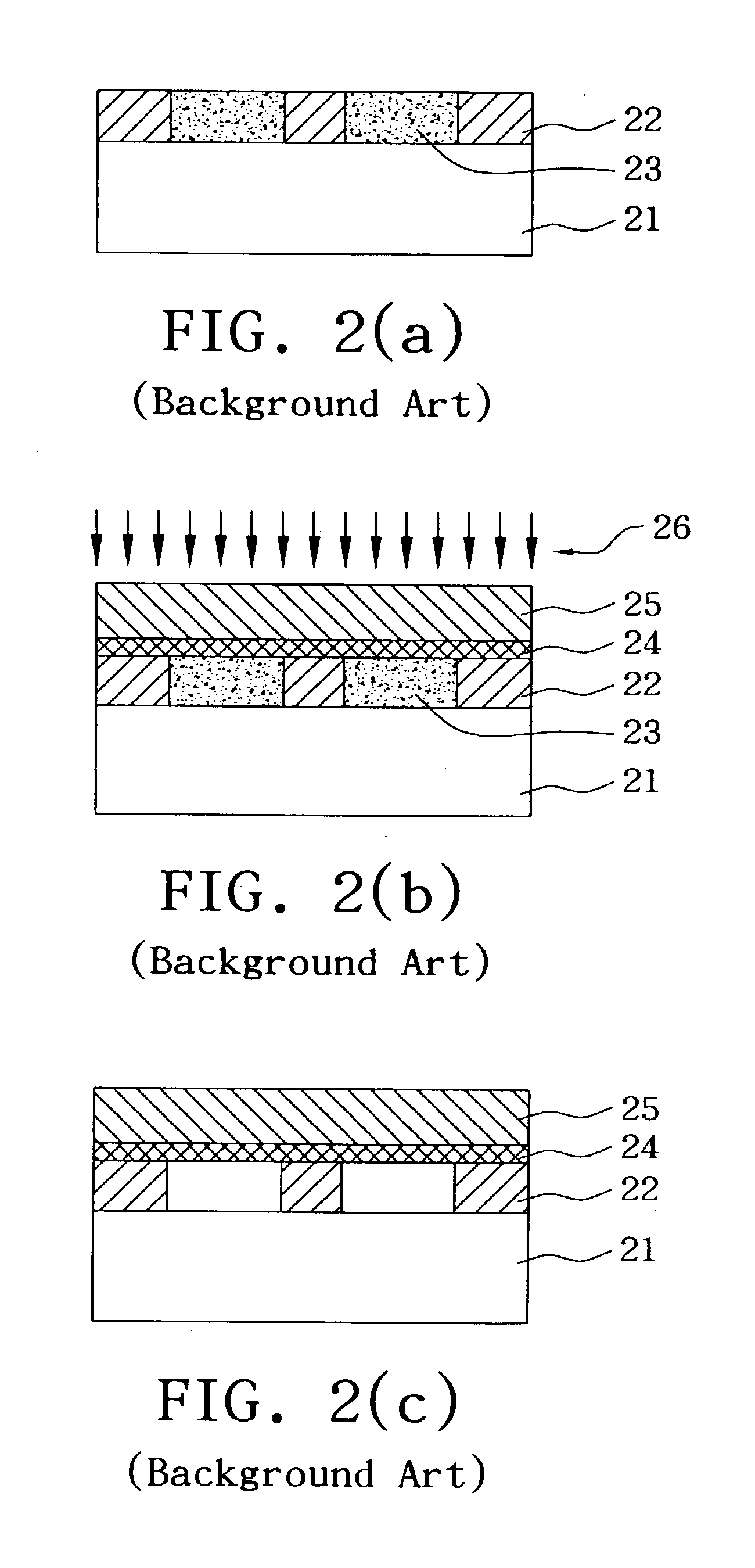Fabrication method of a three-dimensional microstructure
a technology of three-dimensional microstructure and fabrication method, which is applied in the direction of photomechanical equipment, instruments, photosensitive material processing, etc., can solve the problems of microstructure damage, metal mask 24 is a thin film liable to crack thereon, and the problem of adhesion uniformity between them is a serious concern
- Summary
- Abstract
- Description
- Claims
- Application Information
AI Technical Summary
Problems solved by technology
Method used
Image
Examples
Embodiment Construction
[0022] FIGS. 5(a)-5(f) show diagrams of the fabrication process of a 3D microstructure in accordance with the present invention. A substrate 51 is uniformly coated with a first anti-reflection layer 521, as shown in FIG. 5(a). We can use a semiconductor wafer as the substrate 51. The first anti-reflection layer 521 is a photoresist capable of absorbing reflected light on the resist-substrate interface. The CK-6020L resist made by Fujifilm Co. is suitable to be used as a material for the anti-reflection layer due to its properties. In particular, UV light is completely absorbed by the CK-6020L resist.
[0023] The first anti-reflection layer 521 is overlaid with a first SU-8 layer by a spin-on method. After the first exposure step by a first photo mask 551, the SU-8 layer is defined as exposed areas 531 and unexposed areas 541, as shown in FIG. 5(b). SU-8, a thick negative photoresist, has been used in the fabrication of microstructures for several years, because it has a high aspect ra...
PUM
 Login to View More
Login to View More Abstract
Description
Claims
Application Information
 Login to View More
Login to View More - R&D
- Intellectual Property
- Life Sciences
- Materials
- Tech Scout
- Unparalleled Data Quality
- Higher Quality Content
- 60% Fewer Hallucinations
Browse by: Latest US Patents, China's latest patents, Technical Efficacy Thesaurus, Application Domain, Technology Topic, Popular Technical Reports.
© 2025 PatSnap. All rights reserved.Legal|Privacy policy|Modern Slavery Act Transparency Statement|Sitemap|About US| Contact US: help@patsnap.com



